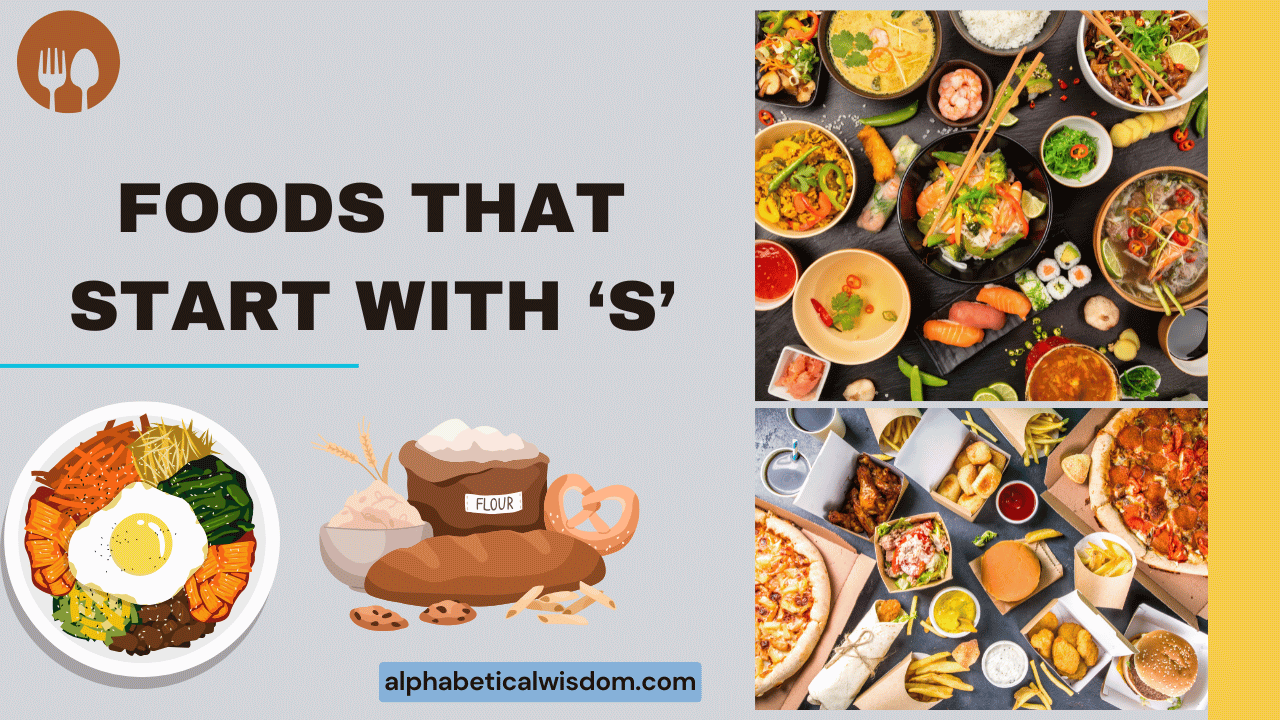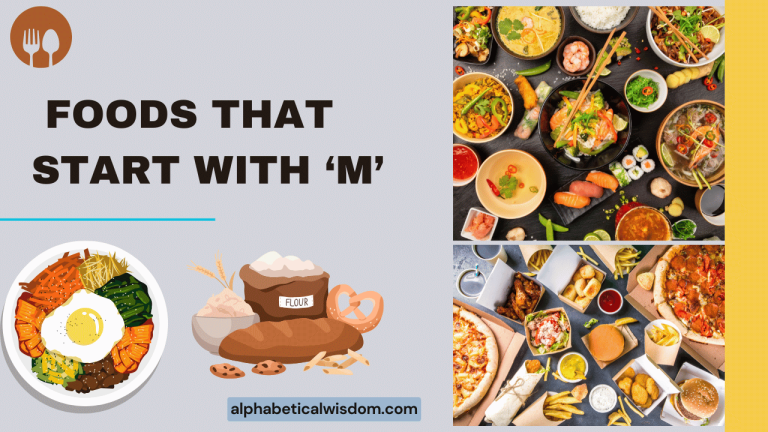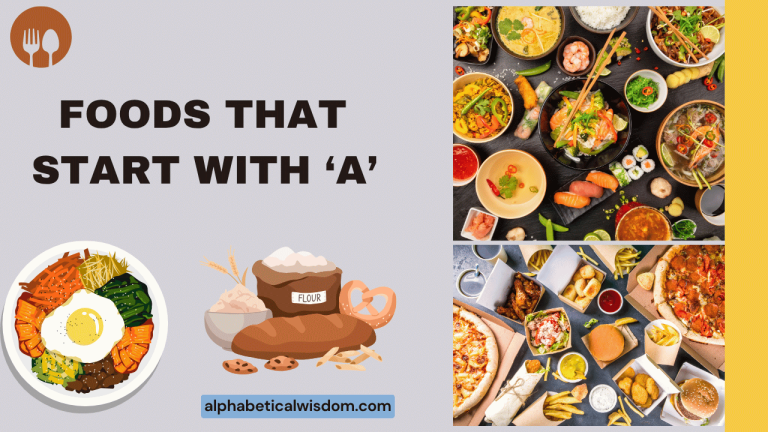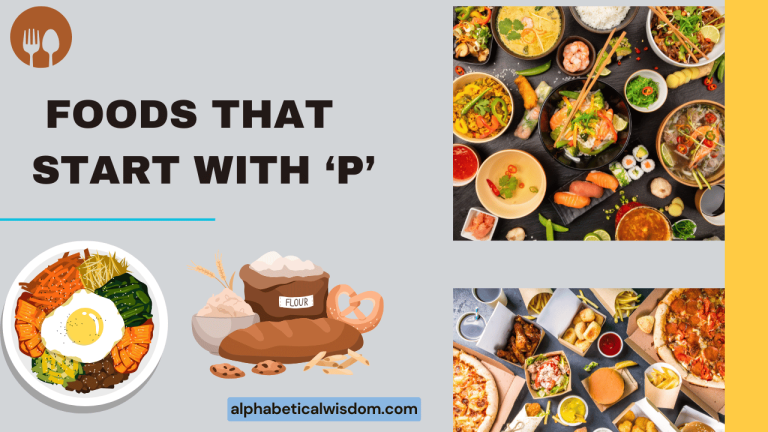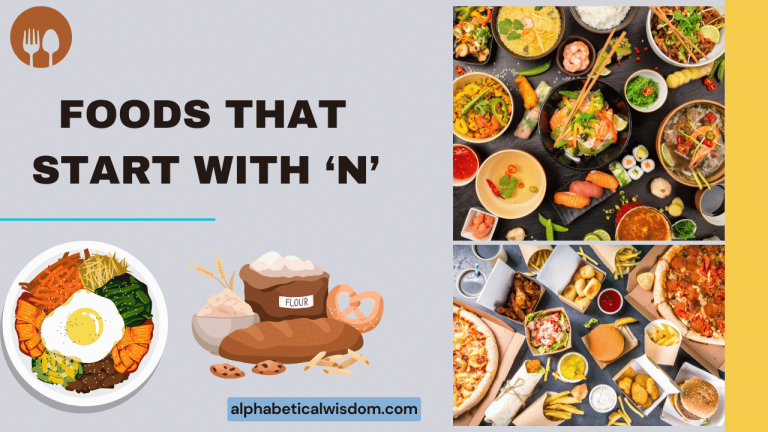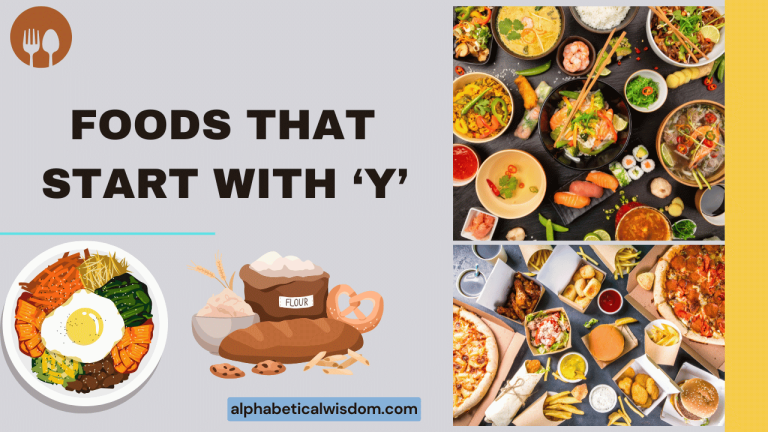Foods That Start With S: A Grammatical Guide
Understanding nouns, particularly those referring to food, is crucial for building a robust vocabulary and mastering English grammar. This article focuses on foods that start with the letter ‘S,’ exploring their grammatical properties and usage in various contexts.
From simple singular nouns to more complex plural forms and countable versus uncountable classifications, this guide provides a comprehensive overview for learners of all levels. Whether you’re a beginner or an advanced student, this exploration of “S” foods will enhance your language skills and culinary knowledge.
Table of Contents
- Introduction
- Definition: Nouns and Food-Related Terms
- Structural Breakdown: Singular and Plural Forms
- Types and Categories of “S” Foods
- Examples of “S” Foods in Sentences
- Usage Rules: Countable vs. Uncountable Nouns
- Common Mistakes and Corrections
- Practice Exercises
- Advanced Topics: Collective Nouns and Idiomatic Expressions
- Frequently Asked Questions (FAQ)
- Conclusion
Introduction
The English language is rich with vocabulary, and mastering different categories of nouns is essential for effective communication. Food-related nouns are a particularly useful subset, enabling us to discuss meals, recipes, and culinary experiences with precision.
This article delves into the world of foods that begin with the letter “S,” examining their grammatical properties, including singular and plural forms, countability, and usage in sentences. By focusing on this specific category, we can gain a deeper understanding of how nouns function within the broader context of English grammar.
This guide is designed for English language learners of all levels, from beginners seeking to expand their vocabulary to advanced students aiming to refine their grammatical accuracy. Understanding these concepts will help you communicate more effectively about food and improve your overall command of the English language.
Definition: Nouns and Food-Related Terms
A noun is a word that names a person, place, thing, or idea. In the context of food, nouns refer to edible substances that provide nourishment and sustenance. These nouns can be further classified based on their grammatical properties, such as countability (whether they can be counted) and singularity/plurality (whether they refer to one or more items). Food-related nouns encompass a wide range of items, including fruits, vegetables, meats, grains, and processed products. Understanding the specific characteristics of these nouns is crucial for using them correctly in sentences and conveying precise meaning. Food nouns can also be concrete, meaning they can be perceived by the senses (e.g., steak, strawberries), or abstract, referring to concepts or qualities related to food (e.g., satisfaction, flavor).
Structural Breakdown: Singular and Plural Forms
Nouns in English have both singular and plural forms. The singular form refers to one item, while the plural form refers to more than one. Most nouns form their plural by adding “-s” to the singular form (e.g., salad becomes salads). However, some nouns have irregular plural forms (e.g., some types of seafood do not change). Understanding these rules is important for correct grammar. Additionally, some food-related nouns are uncountable, meaning they cannot be counted and do not typically have a plural form (e.g., salt, sugar). With uncountable nouns, we use quantifiers like “some,” “much,” or “a little” to indicate quantity. The correct usage of singular, plural, countable, and uncountable forms is essential for clear and accurate communication about food.
Types and Categories of “S” Foods
Foods that start with the letter “S” can be categorized into several groups based on their origin and culinary use. These categories include fruits, vegetables, seafood, sweets and desserts, savory dishes, and spices and seasonings. Each category has its own unique characteristics and grammatical considerations. For example, some fruits and vegetables are countable (e.g., strawberries, spinach leaves), while others are uncountable (e.g., salad when referring to a mixture). Similarly, seafood can be both countable (e.g., shrimp) and uncountable (e.g., sushi when referring to a general dish). Understanding these distinctions is crucial for using these nouns correctly.
Fruits
Fruits are typically sweet and fleshy products of plants that contain seeds. Common fruits starting with “S” include strawberries, star fruit, and soursop. The grammatical properties of these nouns vary. For instance, strawberries is countable and has a regular plural form, while the term star fruit can be used both as a singular and plural noun (though star fruits is also acceptable). Understanding these nuances helps in constructing grammatically correct sentences when discussing these fruits.
Vegetables
Vegetables are edible parts of plants, such as roots, stems, and leaves. Examples of vegetables that start with “S” include spinach, squash, and sweet potatoes. Like fruits, the grammatical properties of these nouns vary. Spinach can be both countable (when referring to individual leaves) and uncountable (when referring to a mass of spinach). Squash and sweet potatoes are typically countable and have regular plural forms. Correctly identifying the countability of these nouns is key to using them accurately in sentences.
Seafood
Seafood refers to edible aquatic animals, including fish and shellfish. Common seafood items starting with “S” include salmon, shrimp, and sardines. The countability of seafood nouns can be tricky. Shrimp is often used as both a singular and plural noun (e.g., “I ate one shrimp” or “I ate many shrimp”), although “shrimps” is also acceptable. Salmon, in its raw form, is often treated as uncountable. Sardines is typically used in the plural form, even when referring to a single can.
Sweets and Desserts
Sweets and desserts are sugary treats often consumed after meals. Examples of sweets starting with “S” include sundaes, shortbread, and sorbet. These nouns are generally countable, with regular plural forms (e.g., sundaes, shortbreads). However, some desserts, like sorbet, can be treated as uncountable when referring to a general serving. Knowing these distinctions helps in accurately describing and discussing these treats.
Savory Dishes
Savory dishes are foods that are not sweet and often include meat, vegetables, or grains. Examples of savory dishes starting with “S” include stew, sandwiches, and salads. Stew can be both countable (referring to different types of stew) and uncountable (referring to a general serving of stew). Sandwiches is a countable noun with a regular plural form. Salad can also be countable (different types of salads) or uncountable (a general serving of salad).
Spices and Seasonings
Spices and seasonings are used to add flavor to food. Examples that start with “S” include salt, saffron, and sage. These nouns are typically uncountable. We usually say “a pinch of salt” or “some saffron” rather than “one salt” or “two saffrons.” Sage is also generally uncountable, although you might refer to “sage leaves” if you are counting individual leaves. Understanding the uncountable nature of these nouns is essential for using them correctly in recipes and descriptions.
Examples of “S” Foods in Sentences
To illustrate the use of foods that start with “S” in sentences, consider the following examples. These examples demonstrate the correct use of singular and plural forms, as well as the appropriate use of countable and uncountable nouns.
By studying these examples, you can gain a better understanding of how to incorporate these nouns into your own writing and speech. The tables below provide a variety of sentences demonstrating the correct grammatical usage of “S” foods.
The following table provides examples of “S” foods used as countable nouns in sentences.
| Food | Sentence |
|---|---|
| Strawberry | I ate a strawberry for dessert. |
| Strawberries | She bought a basket of fresh strawberries. |
| Sandwich | He ordered a sandwich for lunch. |
| Sandwiches | They packed sandwiches for the picnic. |
| Sardine | He opened a can of sardines. (Though “sardines” is the more common usage, this highlights the singular form.) |
| Sardines | Sardines are a good source of omega-3 fatty acids. |
| Sweet potato | She baked a sweet potato for dinner. |
| Sweet potatoes | The recipe calls for two sweet potatoes. |
| Sundae | He ordered a chocolate sundae. |
| Sundaes | The children enjoyed their ice cream sundaes. |
| Scone | She ate a scone with jam and cream. |
| Scones | They served warm scones at the tea party. |
| Shrimp | I ordered grilled shrimp at the restaurant. (Singular or plural usage) |
| Shrimp | The chef prepared a delicious shrimp scampi. |
| Shrimps | Some varieties of shrimps are quite large. (Less common plural) |
| Sausage | He grilled a sausage for breakfast. |
| Sausages | They served sausages and eggs for brunch. |
| Shallot | The recipe calls for one finely chopped shallot. |
| Shallots | He added shallots to the salad for extra flavor. |
| Satsuma | She peeled a juicy satsuma. |
| Satsumas | The children enjoyed eating satsumas during the winter. |
| Starfruit | He sliced a starfruit to garnish the cocktail. |
| Starfruits | The imported starfruits were quite expensive. |
| Soup | I ordered a bowl of tomato soup. |
| Soups | They offered a variety of soups on the menu. |
| Snack | She ate a small snack between meals. |
| Snacks | He packed snacks for the road trip. |
The following table provides examples of “S” foods used as uncountable nouns in sentences.
| Food | Sentence |
|---|---|
| Salt | Please pass the salt. |
| Sugar | She added sugar to her coffee. |
| Saffron | The paella was flavored with saffron. |
| Sage | She used fresh sage to season the chicken. |
| Semolina | The pasta was made from semolina. |
| Soy sauce | He added soy sauce to the stir-fry. |
| Spaghetti | We had spaghetti for dinner. |
| Stew | She made a hearty stew for the cold evening. |
| Salad | I had salad with my lunch. (Referring to the general mixture) |
| Sauerkraut | He enjoys sauerkraut with his sausages. |
| Sweetener | She used artificial sweetener in her tea. |
| Stock | The chef simmered the bones to make a rich stock. |
| Syrup | He drizzled maple syrup on his pancakes. |
| Suet | The traditional pudding recipe calls for suet. |
| Sunflower oil | She fried the vegetables in sunflower oil. |
| Sushi | They ordered sushi for dinner. (Referring to the dish in general) |
| Spice | The curry had a strong spice to it. |
| Sorghum | The farmer planted sorghum in the field. |
| Sherbet | They served lemon sherbet as a palate cleanser. |
| Stuffing | She prepared the stuffing for the turkey. |
| Shortening | The baker used shortening to make the pie crust flaky. |
| Scallion | He garnished the soup with chopped scallion. |
| Seasoning | She added a blend of seasoning to the meat. |
The following table provides examples of “S” foods that can be used as both countable and uncountable nouns depending on the context.
| Food | Countable Usage | Uncountable Usage |
|---|---|---|
| Salad | There are many different types of salads on the menu. (Different types) | I had salad with my lunch. (General mixture) |
| Stew | She makes several delicious stews. (Different types) | We had beef stew for dinner. (General serving) |
| Soup | They offer a variety of soups each day. (Different types) | I’d like some tomato soup, please. (General serving) |
Usage Rules: Countable vs. Uncountable Nouns
The distinction between countable and uncountable nouns is crucial for correct grammar. Countable nouns can be counted and have both singular and plural forms. They can be used with articles (a, an, the) and numerical quantifiers (one, two, three, etc.). Uncountable nouns cannot be counted and typically do not have a plural form. They are used with quantifiers like “some,” “much,” “a little,” and “a lot of.” It’s important to remember that some nouns can be both countable and uncountable, depending on the context. For example, “coffee” is usually uncountable (e.g., “I drink coffee every morning”), but it can be countable when referring to individual cups (e.g., “I ordered two coffees”). A common mistake is to use “many” with uncountable nouns (incorrect: “many salt”). Instead, use “much” (correct: “much salt”).
Common Mistakes and Corrections
One common mistake is using the plural form of an uncountable noun. For example, saying “I need to buy some salts” is incorrect; the correct form is “I need to buy some salt.” Another mistake is using “many” with uncountable nouns (e.g., “There is many sugar in this cake”). The correct form is “There is much sugar in this cake.” Similarly, using “less” with countable nouns is incorrect; use “fewer” instead. For example, “I have less strawberries than you” should be “I have fewer strawberries than you.” Pay attention to the specific rules for countable and uncountable nouns to avoid these common errors.
| Incorrect | Correct |
|---|---|
| I need to buy some salts. | I need to buy some salt. |
| There is many sugar in this cake. | There is much sugar in this cake. |
| I have less strawberries than you. | I have fewer strawberries than you. |
| Can I have two sugars, please? (Ordering coffee) | Can I have two spoonfuls of sugar, please? OR Can I have two packets of sugar, please? |
| I ate a lot of shrimps. | I ate a lot of shrimp. OR I ate many shrimps (less common but acceptable). |
Practice Exercises
Test your understanding of “S” foods and their grammatical properties with the following exercises. These exercises cover singular and plural forms, countable and uncountable nouns, and correct usage in sentences.
Answer keys are provided below to help you check your work. These exercises are designed to reinforce your learning and improve your ability to use these nouns accurately and confidently.
| Question | Answer |
|---|---|
| 1. I want to buy some ______ (salt). | salt |
| 2. She ate two ______ (sandwich) for lunch. | sandwiches |
| 3. He added ______ (sugar) to his tea. | sugar |
| 4. We need to buy more ______ (sardine). | sardines |
| 5. She picked a ripe ______ (strawberry) from the garden. | strawberry |
| 6. They served ______ (stew) for dinner. | stew |
| 7. I like to eat ______ (salad) with my meals. | salad |
| 8. She used ______ (saffron) to flavor the rice. | saffron |
| 9. He cooked the ______ (sweet potato) in the oven. | sweet potatoes |
| 10. The children enjoyed their ice cream ______ (sundae). | sundaes |
| 11. How much ______ (spice) do I need for this recipe? | spice |
| 12. She added a handful of fresh ______ (sage) to the sauce. | sage |
| 13. The chef prepared a delicious ______ (soup) for the appetizer. | soup |
| 14. I need to buy ______ (soy sauce) for the stir-fry. | soy sauce |
| 15. He sprinkled ______ (sesame seed) on the bread. | sesame seeds |
| 16. The farmer harvested the ripe ______ (sorghum). | sorghum |
| 17. She served ______ (sherbet) between courses. | sherbet |
| 18. The recipe calls for a tablespoon of ______ (shortening). | shortening |
| 19. He garnished the dish with chopped ______ (scallion). | scallions |
| 20. The baker used ______ (semolina) to make the pasta. | semolina |
Advanced Topics: Collective Nouns and Idiomatic Expressions
For advanced learners, understanding collective nouns and idiomatic expressions related to food can further enhance your command of the English language. Collective nouns refer to a group of items as a single unit (e.g., “a bunch of spinach”). Idiomatic expressions are phrases whose meaning is not predictable from the literal meanings of the individual words (e.g., “a pinch of salt”). Recognizing and using these advanced grammatical concepts can add nuance and sophistication to your writing and speech. For instance, “a school of sardines” is a collective noun used to describe a group of sardines swimming together. Similarly, the idiom “take something with a grain of salt” means to not take something too seriously. Understanding these nuances can greatly improve your comprehension and expression in English.
Frequently Asked Questions (FAQ)
Here are some frequently asked questions about foods that start with “S” and their grammatical properties:
- Q: Is “shrimp” singular or plural?
A: “Shrimp” can be used as both a singular and plural noun. For example, “I ate one shrimp” and “I ate many shrimp” are both grammatically correct. The plural form “shrimps” is also acceptable, but less common.
- Q: Can “salad” be countable?
A: Yes, “salad” can be countable when referring to different types of salads. For example, “There are many different salads on the menu.” However, when referring to a general serving of salad, it is uncountable (e.g., “I had salad with my lunch”).
- Q: Is “salt” a countable or uncountable noun?
A: “Salt” is an uncountable noun. We usually say “a pinch of salt” or “some salt” rather than “one salt” or “two salts.”
- Q: How do I use uncountable nouns correctly?
A: Uncountable nouns are used with quantifiers like “some,” “much,” “a little,” and “a lot of.” For example, “There is much sugar in this cake.”
- Q: What is a collective noun?
A: A collective noun refers to a group of items as a single unit. For example, “a bunch of spinach” is a collective noun.
- Q: Are there any irregular plural forms for foods starting with “S”?
A: Most foods starting with “S” have regular plural forms (e.g., sandwich/sandwiches). However, some, like shrimp, can use the same form for both singular and plural.
- Q: Can I say “two sugars” when ordering coffee?
A: While commonly understood, it’s grammatically more accurate to say “two spoonfuls of sugar” or “two packets of sugar” because “sugar” itself is uncountable.
- Q: What are some common idioms using food words that start with “S”?
A: One common idiom is “take something with a grain of salt,” which means to not take something too seriously. Another is “salt of the earth,” referring to a person who is honest and good.
- Q: How do I know when to use a singular or plural verb with food nouns?
A: If the noun is singular, use a singular verb (e.g., “The strawberry is ripe”). If the noun is plural, use a plural verb (e.g., “The strawberries are ripe”). If you are using an uncountable noun, treat it as singular (e.g., “The sugar is sweet”).
- Q: Is it correct to say “less” or “fewer” with countable food nouns?
A: Use “fewer” with countable nouns (e.g., “I have fewer strawberries than you”). Use “less” with uncountable nouns (e.g., “I have less sugar than you”).
Conclusion
Mastering the grammatical properties of nouns, particularly those related to food, is essential for effective communication in English. This article has provided a comprehensive overview of foods that start with the letter “S,” exploring their singular and plural forms, countability, and usage in sentences.
By understanding these concepts, you can improve your vocabulary, enhance your grammatical accuracy, and communicate more confidently about culinary topics. Remember to pay attention to the distinction between countable and uncountable nouns and to practice using these nouns in various contexts.
With continued effort and attention to detail, you can achieve fluency and mastery in English grammar.
